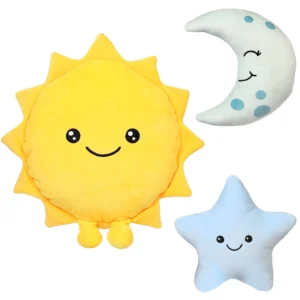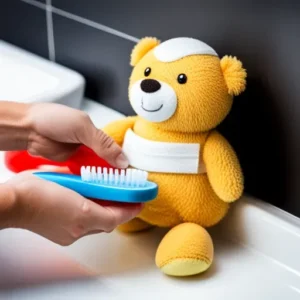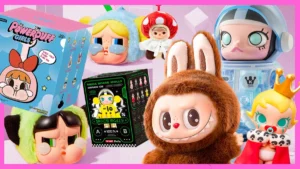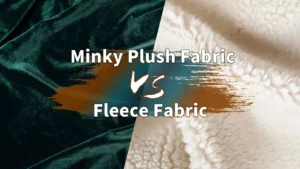Polyester plushies are everywhere—from cozy children’s toys to trendy collectibles—raising a vital question: Are these synthetic soft companions truly safe? As consumers become more conscious about product safety and environmental impact, understanding the materials behind these beloved plush toys is crucial.
Polyester plushies are generally safe when produced following strict safety standards. They use durable synthetic fibers resistant to allergens and wear, but quality and manufacturing processes determine their true safety and sustainability.
Imagine a child hugging their favorite polyester plush bear every night, comforted by its softness, unaware of what’s inside. While polyester makes these toys affordable and durable, are there hidden concerns lurking beneath the surface? Let’s unpack everything you need to know about polyester plush safety and why it matters to you.
1. What Are Polyester Plushies Made Of?

Polyester plushies are primarily made from synthetic polyester fibers used for fabric and stuffing, combined with dyes and sometimes foam pellets for softness.
- What is Polyester Fabric? Polyester is a man-made polymer derived from petroleum, processed into fibers that form soft, durable fabric. It’s popular in plush toys for its resistance to wrinkles, shrinking, and fading.
- Which Components Make Up Polyester Plushies? Beyond the outer fabric, polyester fiberfill stuffing is commonly used for cushioning. Some plushies also contain foam pellets for added weight or texture. Dyes and flame retardants may be applied depending on safety regulations.
- How Do These Materials Compare to Natural Fibers? Unlike cotton or wool, polyester doesn’t absorb moisture, which reduces mold risk but may trap static or odors. This synthetic nature raises environmental concerns despite performance benefits.
- Example: Many budget-friendly plush toys in stores are fully polyester-based, balancing softness and cost-efficiency, while higher-end products may blend polyester with natural fibers for a premium feel. Aspect Description Polyester Fabric Man-made polymer from petroleum, processed into soft, durable fibers; resists wrinkles, shrinking, and fading. Components of Polyester Plushies Outer fabric of polyester fibers; polyester fiberfill stuffing; sometimes foam pellets; dyes and flame retardants per safety standards. Comparison to Natural Fibers Does not absorb moisture (reducing mold risk), but may trap static and odors; synthetic origin raises environmental concerns. Example Budget plush toys often fully polyester-based for softness and cost efficiency; higher-end may blend polyester with natural fibers.
| Aspect | Description |
|---|---|
| Polyester Fabric | Man-made polymer from petroleum, processed into soft, durable fibers; resists wrinkles, shrinking, and fading. |
| Components of Polyester Plushies | Outer fabric of polyester fibers; polyester fiberfill stuffing; sometimes foam pellets; dyes and flame retardants per safety standards. |
| Comparison to Natural Fibers | Does not absorb moisture (reducing mold risk), but may trap static and odors; synthetic origin raises environmental concerns. |
| Example | Budget plush toys often fully polyester-based for softness and cost efficiency; higher-end may blend polyester with natural fibers. |
2. Are Polyester Plushies Safe for Children and Adults?

When manufactured under global safety standards, polyester plushies are safe for all ages, with low allergen risk and non-toxic materials.
- Do Polyester Plush Toys Meet Safety Standards? Reputable manufacturers comply with CPSIA, ASTM F963 (U.S.), EN71 (Europe), and other regulations limiting harmful substances like lead, phthalates, and formaldehyde.
- How Safe Are Polyester Plushies Regarding Allergens and Toxins? Polyester is hypoallergenic for most users but can sometimes cause irritation in sensitive individuals. Non-toxic dyes and flame retardants further improve safety.
- Are There Age Recommendations? Plushies designed for infants often have extra strict standards to prevent choking hazards, including securely sewn eyes and no small detachable parts.
- Case Study: A 2022 U.S. consumer report found that 92% of tested polyester plush toys met or exceeded safety standards, while non-compliant toys mostly came from unregulated imports. Aspect Description Safety Standards Compliance Manufacturers comply with CPSIA, ASTM F963 (U.S.), EN71 (Europe), limiting lead, phthalates, formaldehyde. Allergen and Toxin Safety Polyester is hypoallergenic for most, but may irritate sensitive users; non-toxic dyes and flame retardants enhance safety. Age Recommendations Infant plushies have stricter rules: no small parts, securely sewn eyes to prevent choking hazards. Case Study 2022 U.S. report: 92% of tested polyester plush toys met safety standards; unsafe ones mainly from unregulated imports.
| Aspect | Description |
|---|---|
| Safety Standards Compliance | Manufacturers comply with CPSIA, ASTM F963 (U.S.), EN71 (Europe), limiting lead, phthalates, formaldehyde. |
| Allergen and Toxin Safety | Polyester is hypoallergenic for most, but may irritate sensitive users; non-toxic dyes and flame retardants enhance safety. |
| Age Recommendations | Infant plushies have stricter rules: no small parts, securely sewn eyes to prevent choking hazards. |
| Case Study | 2022 U.S. report: 92% of tested polyester plush toys met safety standards; unsafe ones mainly from unregulated imports. |
3. How Does Polyester Affect Plush Toy Durability and Hygiene?
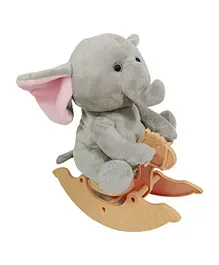
Polyester makes plush toys durable and easy to clean, resisting tears and holding shape well after washing, which helps maintain hygiene.
- How Resistant is Polyester to Wear and Tear? Its synthetic fibers offer excellent tensile strength, meaning plushies last through rough handling and frequent hugs without fabric pilling or stuffing clumping.
- Which Cleaning Methods Are Recommended? Polyester plushies usually withstand machine washing on gentle cycles and air drying, though some may require spot cleaning to preserve shape and color.
- How Does Polyester Impact Hygiene? Polyester’s moisture resistance reduces bacterial and mold growth, unlike natural fibers that absorb sweat and dirt, contributing to longer-lasting freshness.
- Example: Daycares and hospitals often prefer polyester plush toys because of their durability and easy sanitation compared to wool or cotton plush. Aspect Description Resistance to Wear and Tear Synthetic polyester fibers provide excellent tensile strength, ensuring plushies withstand rough use without pilling or stuffing clumping. Recommended Cleaning Methods Machine washable on gentle cycles and air drying; some require spot cleaning to maintain shape and color. Impact on Hygiene Moisture-resistant polyester reduces bacterial and mold growth compared to moisture-absorbing natural fibers, keeping plushies fresher longer. Example Daycares and hospitals favor polyester plush toys for durability and easy sanitation over wool or cotton alternatives.
| Aspect | Description |
|---|---|
| Resistance to Wear and Tear | Synthetic polyester fibers provide excellent tensile strength, ensuring plushies withstand rough use without pilling or stuffing clumping. |
| Recommended Cleaning Methods | Machine washable on gentle cycles and air drying; some require spot cleaning to maintain shape and color. |
| Impact on Hygiene | Moisture-resistant polyester reduces bacterial and mold growth compared to moisture-absorbing natural fibers, keeping plushies fresher longer. |
| Example | Daycares and hospitals favor polyester plush toys for durability and easy sanitation over wool or cotton alternatives. |
4. What Environmental and Health Concerns Are Associated with Polyester Plushies?
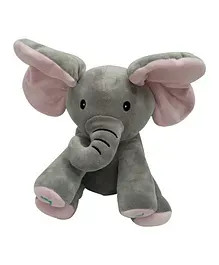
Polyester, being petroleum-based and non-biodegradable, poses environmental challenges, but newer recycling and sustainable practices are helping mitigate impact.
- Is Polyester Eco-Friendly or Recyclable? Traditional polyester is derived from fossil fuels and can take centuries to decompose, raising landfill and microplastic pollution concerns. However, recycled polyester (rPET) made from plastic bottles is increasingly used.
- How Do Manufacturers Address Environmental Standards? Leading factories adopt eco-certifications like OEKO-TEX and GRS (Global Recycle Standard) to ensure safer, more sustainable materials.
- What Are Alternatives to Conventional Polyester? Innovations include bio-based polyesters from plant materials, blended fabrics, or organic cotton alternatives that offer biodegradability without sacrificing softness.
- Data Table: Polyester Environmental Impact Overview
| Aspect | Conventional Polyester | Recycled Polyester (rPET) | Bio-Based Polyester |
|---|---|---|---|
| Source | Petroleum | Recycled plastics | Renewable plant materials |
| Biodegradability | Very low (100+ years) | Low | Moderate to high |
| Carbon Footprint | High | Reduced (~30-50% less) | Variable, generally lower |
| Microplastic Pollution | Significant | Present but reduced | Minimal |
5. How Can Consumers Identify High-Quality and Safe Polyester Plushies?

Look for certifications like CPSIA, EN71, OEKO-TEX, and clear labeling of materials to ensure safe, high-quality polyester plush products.
- What Certifications Guarantee Safety? CPSIA (Consumer Product Safety Improvement Act) and EN71 (European Toy Safety) are crucial. OEKO-TEX certification ensures no harmful chemicals are used.
- Which Buying Factors Matter? Inspect stitching quality, material transparency, and brand reputation. Avoid plush toys with strong chemical odors or small detachable parts for children under 3.
- How Does Price Reflect Quality? Ultra-cheap plushies may cut corners in safety testing or use inferior materials, so balancing cost and trusted brands is key.
- Example: Premium brands often provide detailed product info and customer support, reflecting confidence in product safety and durability. Aspect Description Safety Certifications CPSIA (U.S.), EN71 (Europe), and OEKO-TEX ensure safety and absence of harmful chemicals. Buying Factors Check stitching, clear material labels, brand reputation; avoid strong chemical smells and small parts for kids under 3. Price vs. Quality Very cheap plushies may compromise safety/testing; balance cost with trusted brands for quality. Example Premium brands offer detailed info and customer support, signaling product safety and durability.
| Aspect | Description |
|---|---|
| Safety Certifications | CPSIA (U.S.), EN71 (Europe), and OEKO-TEX ensure safety and absence of harmful chemicals. |
| Buying Factors | Check stitching, clear material labels, brand reputation; avoid strong chemical smells and small parts for kids under 3. |
| Price vs. Quality | Very cheap plushies may compromise safety/testing; balance cost with trusted brands for quality. |
| Example | Premium brands offer detailed info and customer support, signaling product safety and durability. |
6. Are There Innovations Improving the Safety and Sustainability of Polyester Plush Toys?
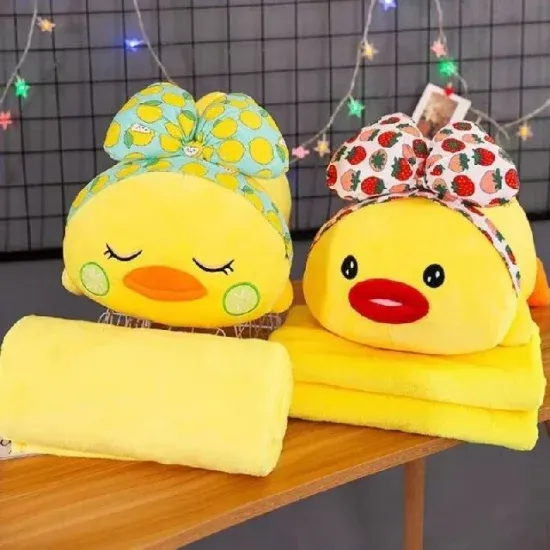
New materials like recycled polyester, bio-based fibers, and safer dyes are revolutionizing plush toy safety and environmental impact.
- What New Materials Are Emerging? Recycled polyester reduces waste and carbon emissions; bio-based polyesters from corn or sugarcane offer biodegradable options.
- How Are Safer Dyes and Finishes Used? Manufacturers now utilize low-impact, non-toxic dyes and flame retardants that meet strict safety guidelines.
- What Role Do Smart Textiles Play? Some plush toys incorporate antimicrobial fibers and moisture-wicking technology to improve hygiene and comfort.
- Future Outlook: Industry trends lean toward circular economy models—designing plush toys for easier recycling or repurposing, benefiting consumers and the planet. Aspect Description Emerging Materials Recycled polyester lowers waste and emissions; bio-based polyesters from plants offer biodegradable alternatives. Safer Dyes and Finishes Use of low-impact, non-toxic dyes and flame retardants meeting strict safety standards. Role of Smart Textiles Integration of antimicrobial fibers and moisture-wicking tech to enhance hygiene and comfort. Future Outlook Movement toward circular economy—designing toys for recycling and repurposing, benefiting environment and consumers.
| Aspect | Description |
|---|---|
| Emerging Materials | Recycled polyester lowers waste and emissions; bio-based polyesters from plants offer biodegradable alternatives. |
| Safer Dyes and Finishes | Use of low-impact, non-toxic dyes and flame retardants meeting strict safety standards. |
| Role of Smart Textiles | Integration of antimicrobial fibers and moisture-wicking tech to enhance hygiene and comfort. |
| Future Outlook | Movement toward circular economy—designing toys for recycling and repurposing, benefiting environment and consumers. |
Conclusion
Polyester plushies, when crafted with care and transparency, offer safe, durable, and affordable companions loved worldwide. For businesses seeking customized, high-quality plush products that align with safety and environmental standards, Kinwin is your trusted partner. Contact us today to discuss bespoke plush toy solutions tailored to your brand’s vision and customer needs.




